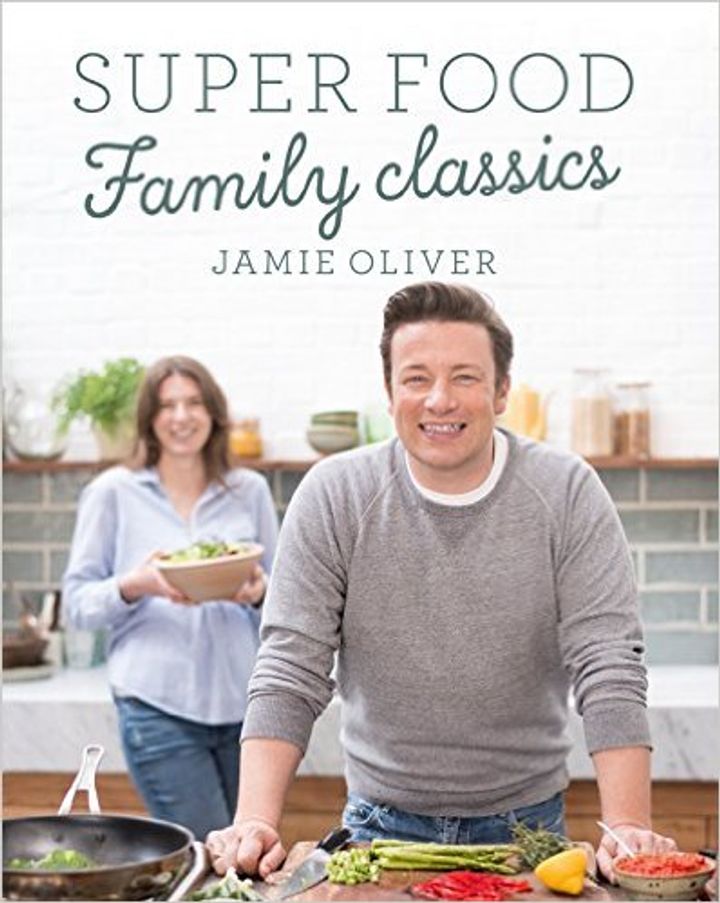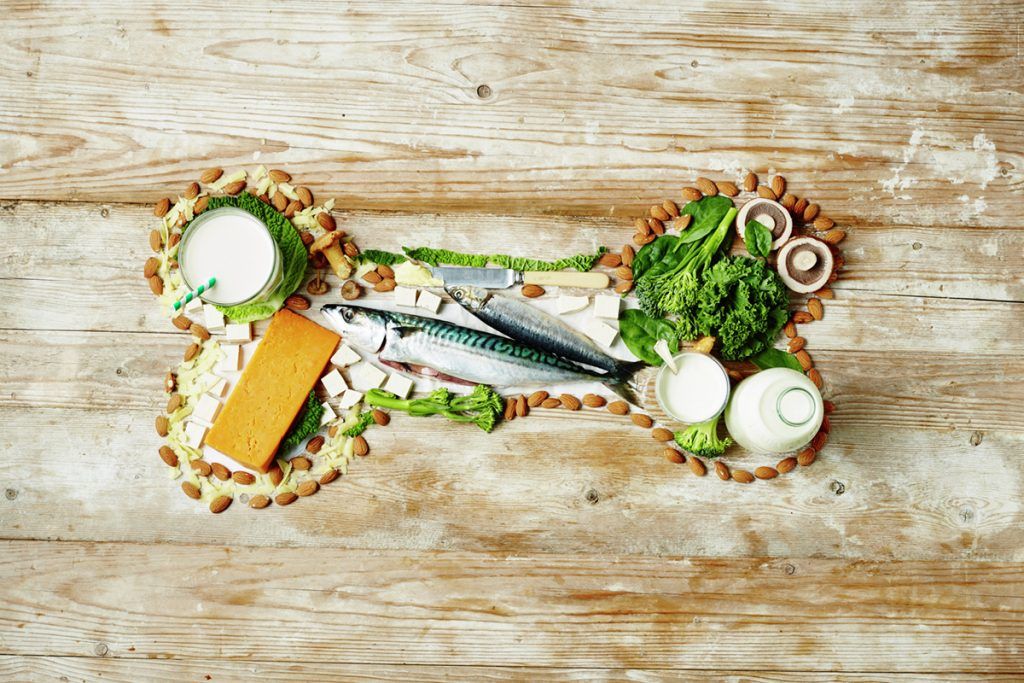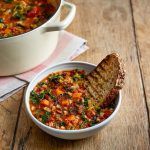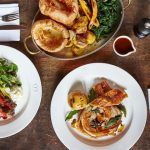Our bones are the supporting system of our bodies, and I want you to aspire to having strong, dense bones.
If you look at a cross-section of a bone, I think it looks like a coral reef, and just like coral, bones are living organisms that are constantly being broken down and rebuilt. That’s why it’s so important to understand how they work, and how we can keep them strong, dense and healthy. The best way to do this is through a varied, balanced diet rich in nutrients, especially calcium, protein and vitamins D and K, and by being physically active.
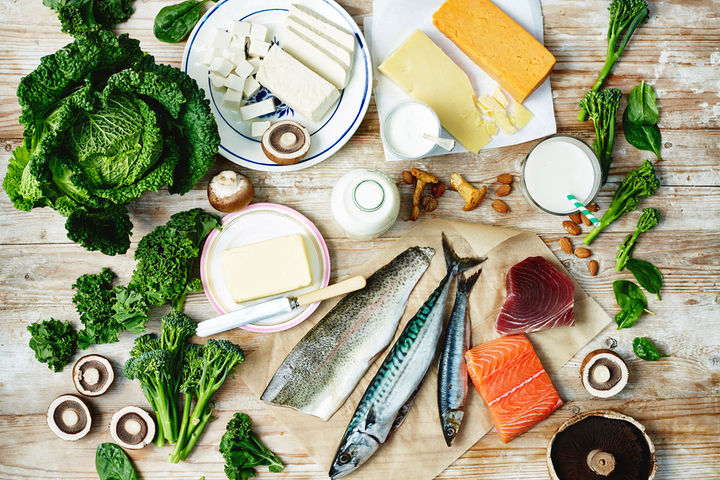
UP YOUR CALCIUM INTAKE
The mineral calcium is integral to the structure of our bones – 99% of our calcium stores are found in our bones and teeth! We want those stores to stay there, keeping us as strong as possible, so we need to include calcium-rich foods in our diet (milk, cheese, yoghurt, sardines, tofu, broccoli, and ingredients fortified with calcium, such as almond milk).
THE ROLE OF VITAMIN D
Vitamin D helps us to absorb calcium from the food we eat, and helps us maintain a healthy bone structure. It plays a role in muscle function, helping us balance and decreasing the risk of a fall, and in turn broken bones, which is particularly important for older people.
We get the majority of our vitamin D from sunlight, when our skin is exposed to ultraviolet B rays. Here are my tips for getting maximum vitamin D:
- In the spring and summer months, expose 10–20% of your body (arms, hands, face and neck) to the sun for about 10–15 minutes a day, being careful not to let your skin burn, to produce enough stores for the winter.
- The best way to tell whether you’re in the right sunlight to make vitamin D is if your shadow is shorter than your height.
- During the winter months, the reduced angle of the sun means we’re unable to make vitamin D from sunlight, so we need to top up from food. It’s found in oily fish (such as salmon, trout and mackerel), liver, eggs, wild mushrooms and in products specifically fortified with vitamin D, such as milk and yoghurt. Supplements can be helpful during the winter months.
THE ROLE OF VITAMIN K
Found particularly in leafy green veg like broccoli, cabbage, kale and spinach, vitamin K is essential for a healthy bone structure. Some studies have shown an increased risk of bone fractures in elderly people with low levels of vitamin K, so be proactive and try to up your intake. The average adult should be getting 75 micrograms per day – eating just 7g of curly kale gives us our entire daily requirement in one sitting!
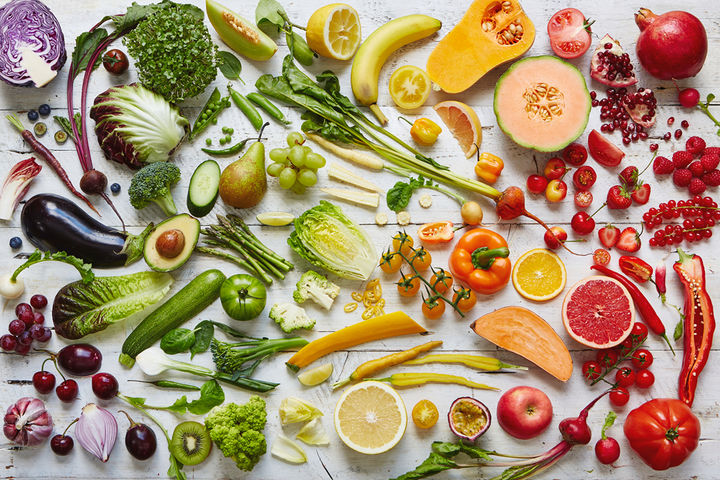
BALANCING BLOOD ACID LEVELS
One really common problem when it comes to bone health is that because many of us don’t hit our 5-a-day target for veg and fruit consumption we don’t get enough potassium, which tips our blood acid levels off balance.
If we also don’t have enough calcium in our diets, our bones have to release calcium into our bloodstream to neutralise these levels. Getting plenty of potassium from veg and fruit will:
- Keep our blood acid levels in check in the first place, which by default protects our calcium stores.
- This then helps to maintain our peak bone mass and reduce age-related bone loss, which in the long run protects our skeleton.
Too much salt can also tip our blood acid levels off balance, so keep that in check.
Protein makes up roughly 50%of our bone volume, and our bone protein matrix is constantly being remodelled. Therefore, it’s important to eat protein regularly, but we need to pair it with veg and fruit to help to balance its acidity.
TOP TIPS FOR GOOD BONE HEALTH
Regular physical exercise is strongly associated with building and maintaining bone mass and muscle strength. When we’re physically active, hormonal change kicks in within our bodies, causing our bones to get thicker and stronger.
There are two types of exercise we should do for maximum benefit – weight bearing and muscle strengthening.
- Weight-bearing exercises – such as running, hiking, dancing, tennis, yoga, pilates and climbing stairs – help to maintain and build strong bones.
- Muscle-strengthening exercises – such as using weight machines and elastic exercise bands or lifting kettlebells – help us with balance and coordination, which can prevent us from falling and in turn reduce the risk of fracturing or breaking a bone.
Crucially, it’s never too late to try to improve our bone health. Try these recipes that are high in vitamin D and K to get you started.
For more info on bone health, check out the National Osteoporosis Society – they’re the UK’s leading osteoporosis and bone health charity.
Extract adapted from Super Food Family Classics by Jamie Oliver, published by Penguin Random House ⓒ Jamie Oliver Enterprises Limited (2016 Super Food Family Classics). Cover photography by Paul Stuart.
